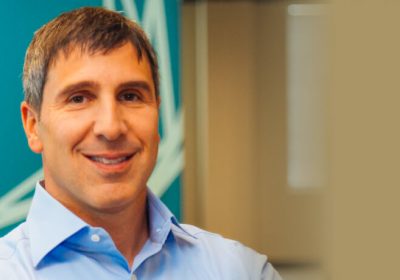
- Author: Jessica Mudditt
- Posted: May 4, 2023
Future focused
Invetech’s Vice President of Finance, Janet O’Meara, led one of the biggest upgrades a CFO can be involved in: upgrading the ERP system to SAP. She explains why the complex digital transformation was a change worth making.
When O’Meara joined Invetech as the Vice President of Finance late in 2019, it quickly became apparent that the existing ERP was no longer fit for purpose.
“Our ERP was more than 20-years-old and it hadn’t been kept up to date. Our engineers are super smart and they had created a workaround – they built a purchase order system outside of it. In a sense though, we were a victim of our own success.”
Invetech is a Melbourne-based, full-service provider of product design, instrument development and contract manufacturing with a focus in healthcare markets. The tipping point for an overhaul came two years later, when the company’s strategic direction changed to include an increase in recurring revenue by expanding its manufacturing business.
“We wanted to start to manufacture products of our own and bring in-house contract manufacturing on behalf of our clients,” says O’Meara. “The existing system would not be able to cope with complex manufacturing. We also knew that even if we upgraded the system, it would be much like undergoing a new implementation.”
O’Meara had undertaken an implementation at a previous company some years earlier, although it was SAP Business One, which is not SAP’s manufacturing version and is therefore more straightforward.
At Invetech’s business in the United States, an implementation had been completed four years earlier, and it had not been a success. However, that was not the only reason why the implementation began with a sense of trepidation.
“The team in the United States was still dealing with the pain of not having made the right decisions during the implementation. That scared us because we didn’t want to end up in the same position. We were also pretty new in the manufacturing game. We were humble enough to know that we didn’t know what we didn’t know.”
Another reason for the complexity was to ensure that the new system could grow with the company.
“Our business is quite complex for our size. It was important for us to choose a new system that could flex with us into the future.”
The SAP S/4HANA Cloud, public edition was deemed the product best suited for current and future needs. It requires six monthly upgrades, which was an intimidating prospect to some, but came with the benefit of remaining up-to-date over time. A longer-term benefit is no longer needing to run the ERP on the company’s prem server.
“The next time we go to upgrade our service, there will not be an additional hardware cost and it will be far less onerous. That is an ongoing benefit over a longer period of time.”
The first update to the new system will occur later in the year.
A matter of trust
O’Meara was grateful to have continuous support from the company’s President/CEO, Andreas Knaack, who was also the project sponsor.
“Our CEO was supportive right from the start. He’s an engineer by training so he likes to understand the details. He asked the tough questions.”
Throughout her career, O’Meara has approached her relationships with CEOs and other senior figures by demonstrating her trustworthiness. Even when the news is not good, honesty must be paramount.
“My whole role is to support the CEO. The CFO needs to be the person they can trust implicitly with everything,” she says.
“The relationship I have with our CEO is one of absolute honesty. He knows that whatever information I bring to him – good, bad or otherwise – is my genuine view. He can trust me to tell him what he needs to know, at the time he needs to know it.”
Prior to kick-off in September 2020, Invetech held a ‘Kaizen’ event for its internal team. The concept of ‘Kaizen’ means ‘continuous improvement’ in Japanese. The idea was to bring everyone onboard with the underlying need for the change.
“We brought people in from different parts of the business and we said, ‘If we are going to do this, what do you need? What are your requirements? How’s this going to work?’” says O’Meara.
Navigating change
Invetech utilized the services of Deloitte as implementation partner and to guide it through best practices for change management. O’Meara described its Communic8 platform and change management methodology as invaluable.
“It allowed us to regularly publish neat and snappy video updates to staff. It was a great conduit,” she says. “We also followed the advice of Alice and Lachlan at Deloitte, who were really across this. Our communication efforts ran in parallel with the actual technical implementation, and it was equally important.”
She says that the internal culture of Invetech makes it amenable to change, but that did not mean that communication was any less important.
“Having a team of wickedly intelligent engineers who are always looking for the next best thing means that we have a mentality of being changemakers. But you can’t just tell them what is going to happen and they accept it. They want to know why. They want to play with it. They want to try and break it.”
O’Meara said that her mantra was to communicate to the point of oversaturation.
“We called our SAP implementation ‘Bunpa,’ which is an Aboriginal word for ‘beautiful transformation’. If people started rolling their eyes when I started talking about Bunpa, then I knew I had communicated enough – because everybody knew what Bunpa was.”
26 weeks from start to finish
The implementation was completed within the 26-week timeframe, and went live in February. While some of her colleagues subsequently expressed their surprise at how smoothly the major undertaking went, O’Meara had been confident from the get-go that she had the best team assembled and the right partner for change with Deloitte.
“It was such a great sense of achievement for the whole team,” she says.
“Don’t get me wrong – it was tough. We’re still working into it, but every month it gets easier and more efficient. We knew it was going to take us in the right direction.”
The new ERP system provides full financial transparency, which will help O’Meara and her team to improve the bottom line. In the past, deep analytics were difficult to obtain using basic spreadsheets and the previous reporting system. Now it will be possible to use deep analytics for predictive purposes.
“We do very complex engineering projects that can run over years and it can be difficult to cost,” she says. “Now, with a smart system, the ultimate goal is that instead of starting from a blank piece of paper, we want to populate a quote with data to provide a basic quote that my team can work with.”
When O’Meara started out in her career as an Chartered Accountant, the focus was on simply being a bean counter.
“You reported the past. You didn’t even think about the future. Last year, we predicted the 2023 numbers seven times before the year had even begun.”
What would I do differently?
The SAP implementation was a success from any measure, however in hindsight, O’Meara believes that more could have been done to mentally prepare staff for what lay ahead.
“No matter how much we told our team that the implementation will take a certain amount of their time, and to explain what would be required of them, until you’re living it, you just don’t get it.”
She says that running workshops that gave staff the chance to use the new system before the transformation began would have reduced anxiety levels along the way.








